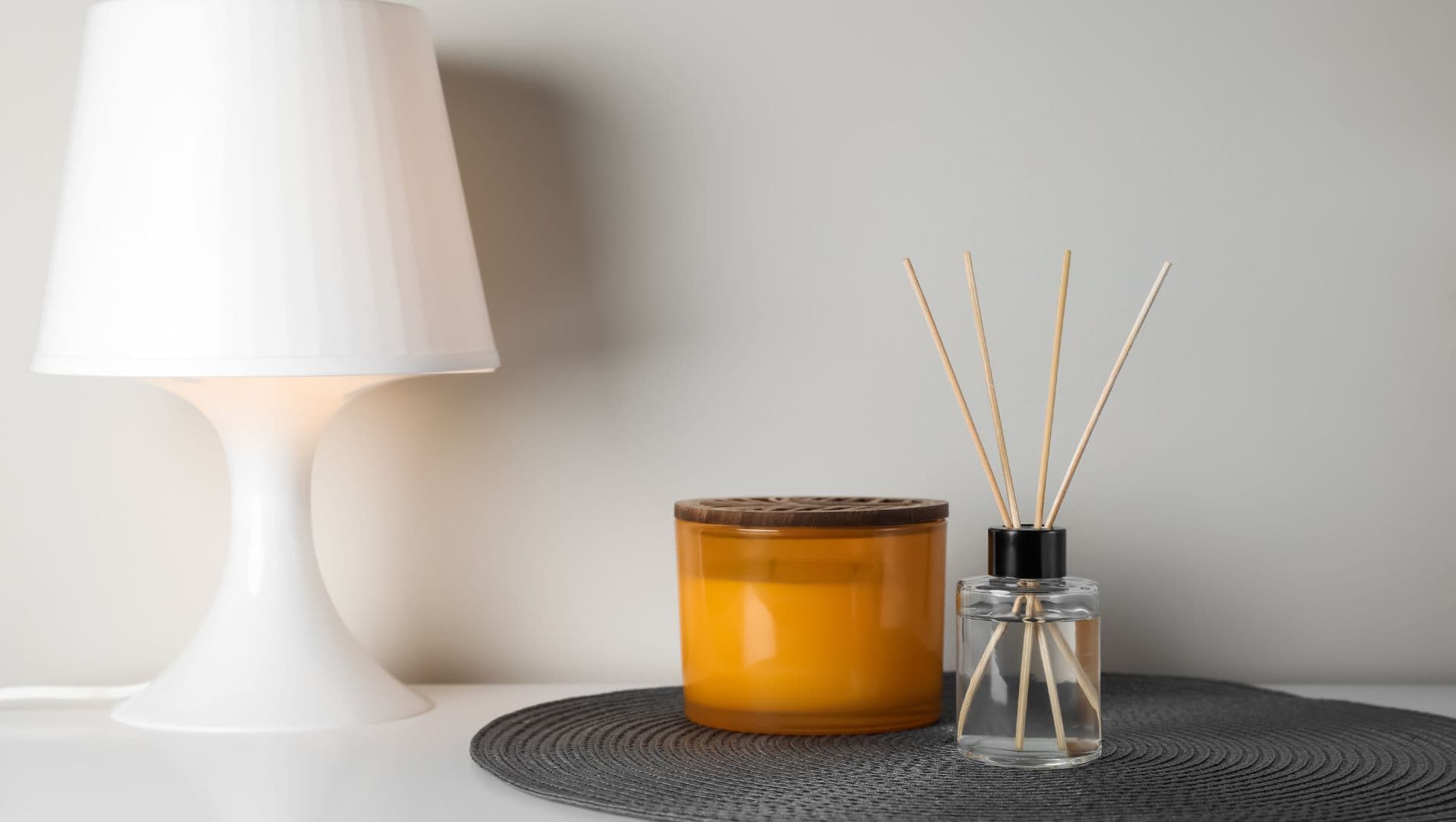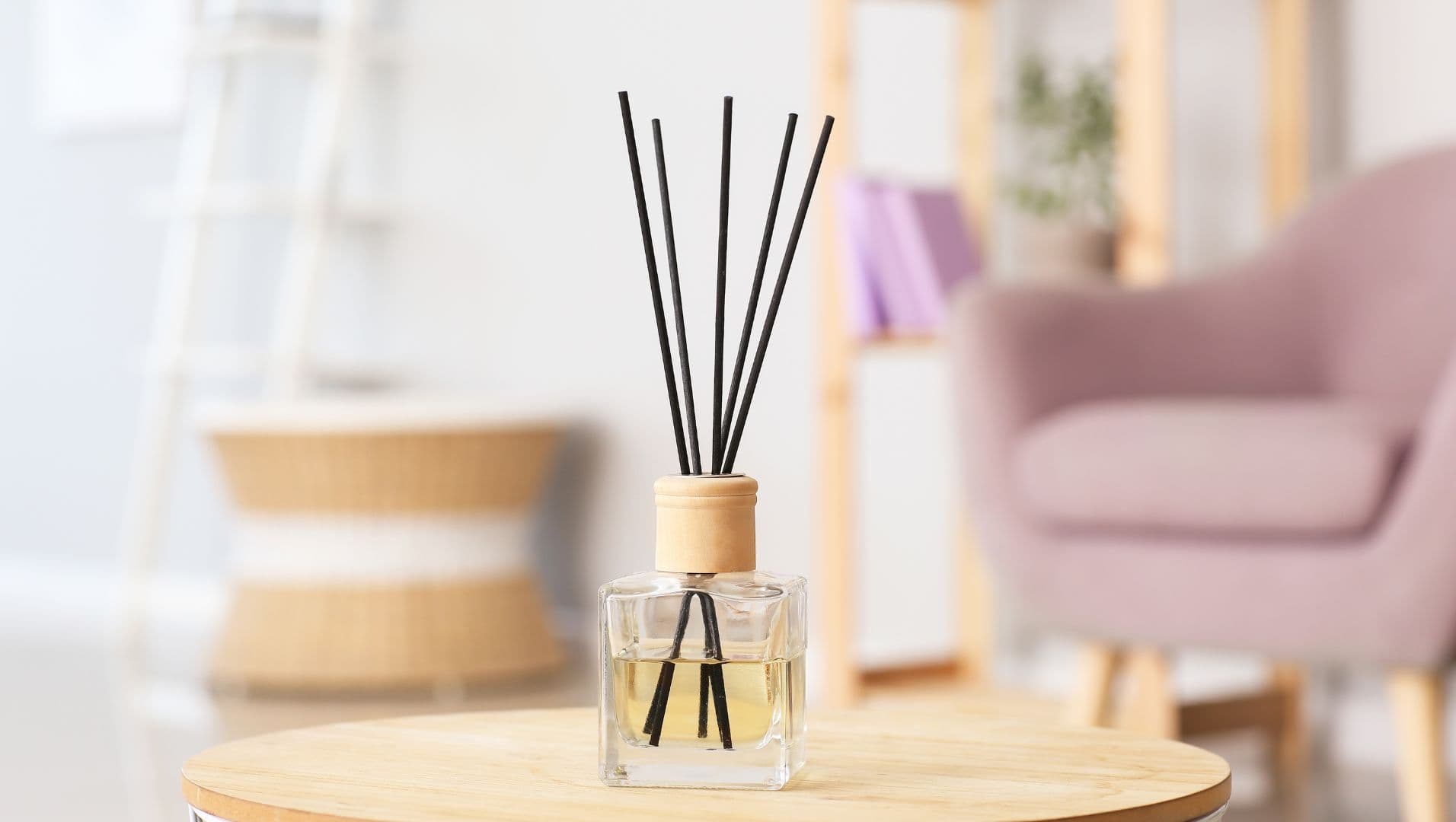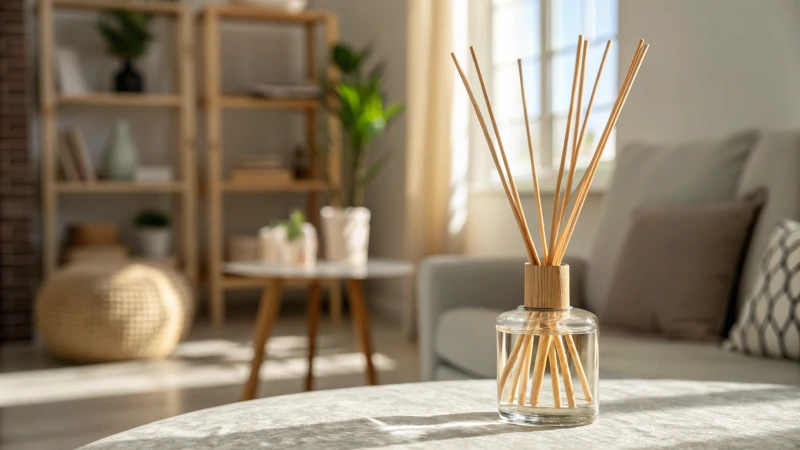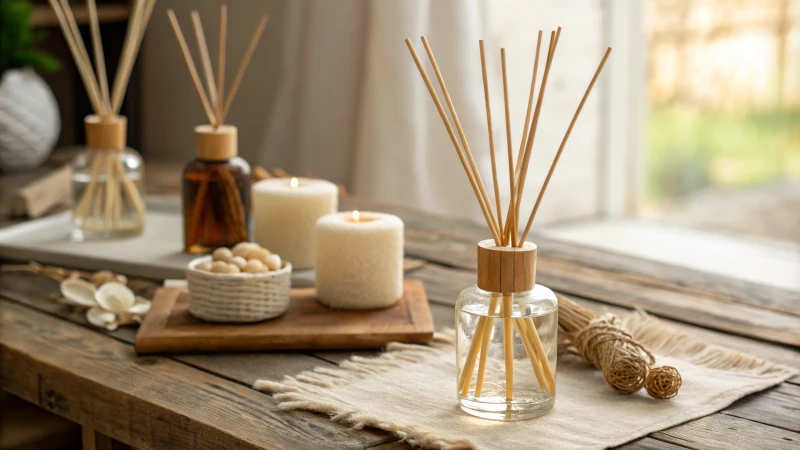
Have you ever thought about the lifespan of those rattan reeds in your favorite diffuser? I certainly have!
Rattan reeds typically last between 4 to 6 weeks. Their lifespan often depends on the reed quality, the fragrance oil type and the environment around them. Good upkeep helps them work better and last longer. Proper care is really important.
I remember the first time I set up my reed diffuser. I felt very excited to fill my home with soothing smells. I had no clue what to expect about how long the rattan reeds would last. Usually, these lovely little sticks last about 4 to 6 weeks. Many things affect their lifespan. The quality of the reeds matters. The fragrance oil you choose also matters. The environment around them matters as well. These things all influence how long the sticks spread that delightful scent. Regular care helps keep the fragrance alive for longer. Regular care really matters!
Rattan reeds last 4 to 6 weeks on average.True
Rattan reeds typically have a lifespan of 4 to 6 weeks depending on various factors.
Quality of fragrance oil does not affect reed lifespan.False
The type of fragrance oil used can significantly impact the longevity of rattan reeds.
What Factors Affect the Lifespan of Rattan Reeds?
Do you wonder how to help your rattan reeds endure for a longer time? Understanding important factors that affect their lifespan really matters. It is probably essential in your sustainable design journey!
Several factors affect how long rattan reeds last. Environmental conditions play a big role. The quality of raw materials also affects them. Maintenance practices and usage patterns impact their lifespan too. Proper care significantly increases their durability. High-quality sources really help extend their life.

Environmental Conditions
I often admire the beauty of rattan items in my home. However, I quickly learned that their lifespan depends on environmental factors. Rattan is sensitive to its surroundings. Temperature, humidity, and sunlight influence whether your rattan remains vibrant or begins to fade.
Rattan thrives in humid tropical climates. I always try to keep my pieces in a balanced environment. One summer, I forgot to check the humidity levels and my lovely rattan chair developed mold. This reminded me of the importance of proper storage for rattan. Proper storage is really crucial. You can learn more about optimal storage conditions1 to maintain rattan’s integrity.
Quality of Raw Materials
When I started sourcing rattan, I found that not all rattan is the same. The quality of raw materials affects how long your rattan items last. High-grade rattan is more resilient than lower-grade varieties. It’s like comparing a strong old oak tree to a weak sapling.
A table below illustrates the different grades of rattan and their characteristics:
| Rattan Grade | Characteristics | Lifespan |
|---|---|---|
| A | Thick, strong, minimal defects | 10+ years |
| B | Moderate strength, some flaws | 5-10 years |
| C | Thin, brittle | 1-5 years |
I suggest choosing suppliers who value ethical harvesting. This ensures durability and kindness to our planet.
Maintenance Practices
Let’s discuss maintenance! This changed everything for me. I used to ignore how important it is to care for my rattan pieces. Regular cleaning and conditioning can do wonders.
Here are some recommended practices:
- Use a soft brush to remove dust.
- Occasionally apply a natural oil to nourish the fibers.
- Avoid harsh chemicals that harm protective layers.
For detailed maintenance techniques, visit this guide on rattan care2.
Usage Patterns
Finally, how we use our rattan items greatly impacts their lifespan. Initially, I used my rattan furniture for everything due to my love for it. However, I noticed wear and tear quickly; decorative pieces last longer than those used heavily.
Understanding these factors helps me choose which rattan products to invest in and guides me on how to care for them properly. To explore more about how usage affects durability, check out this resource3.
Rattan thrives best in humid tropical climates.True
Humidity is crucial for rattan's growth, but excessive moisture can cause mold, impacting its lifespan.
Higher-grade rattan lasts longer than lower-grade rattan.True
Quality of raw materials affects durability; higher-grade rattan is more resilient and less prone to damage.
How Can You Prolong the Life of Your Rattan Reeds?
Let’s explore some proven strategies. These really help you enjoy the lovely fragrances of your rattan reeds for a longer time. Trust me, your senses will feel grateful!
Rattan reeds stay fresh longer if you keep them away from direct sunlight. Turning them every week helps spread the smell evenly. You should pick good quality oils and keep humidity levels just right. These actions keep your home smelling nice for a long time. Really long.

Understanding Rattan Reeds
Rattan reeds are natural, sustainable materials used in reed diffusers that release fragrance into the air. To prolong their life, it’s crucial to understand their properties and how they interact with essential oils. Rattan is porous, allowing it to absorb and diffuse scents effectively. However, exposure to certain conditions can lead to faster degradation.
Optimal Placement for Longevity
To maximize the lifespan of your rattan reeds, consider their placement within your home. Here are some key factors to keep in mind:
| Factor | Recommendation |
|---|---|
| Light Exposure | Keep them away from direct sunlight. |
| Temperature | Flip them often to maintain moisture. |
| Humidity | Choose good-quality essential oils. |
By placing your diffuser in a cool, shaded area, you can help the reeds maintain their integrity and performance over time.
Care Instructions for Rattan Reeds
Regular care is essential for extending the life of your rattan reeds. Here are some practical tips:
- Flip the Reeds: Turning the reeds every week allows for even distribution of fragrance.
- Use Quality Oils: High-quality essential oils last longer and are less likely to damage the reeds.
- Monitor Oil Levels: Refill the diffuser when oil levels are low to prevent reeds from drying out.
For additional details on maintenance, consider exploring reed diffuser care4.
Environmental Considerations
The environment where you place your reed diffuser significantly impacts its lifespan. Consider these environmental factors:
- Airflow: Ensure there’s some airflow to help disperse the fragrance without overwhelming the reeds.
- Cleaning: Dust can accumulate on reeds, which may hinder performance; gently wipe them down occasionally.
- Avoid Over-saturation: Too much oil can cause reeds to become overly saturated, reducing their lifespan.
By maintaining a balanced environment for your rattan reeds, you can enhance both their effectiveness and durability. Learn more about environmental effects on fragrances.
Rattan reeds should be kept away from direct sunlight.True
Direct sunlight can dry out rattan reeds, reducing their effectiveness and lifespan. Keeping them shaded helps maintain moisture and prolongs their life.
Flipping rattan reeds weekly has no impact on scent diffusion.False
Regularly flipping rattan reeds enhances scent distribution by allowing the oils to circulate evenly, thus improving their overall performance.
When Should I Replace My Rattan Reeds?
Keeping my home smelling wonderful brings joy. Knowing when to change my rattan reeds matters a lot. Let me share how I handle this aromatic journey. My space feels inviting and fresh.
I usually change my rattan reeds every 1 to 3 months. Usage affects how often I replace them. Dryness or weak scent means it’s time for new reeds. Turning the reeds over often keeps the scent fresh. They probably last longer with regular flipping.

Understanding Rattan Reeds Lifespan
Rattan reeds play a big role in my diffuser. They are the silent heroes that soak up and spread lovely smells across my home. But, like any hard-working decor, they wear out over time. Watching their performance is really important.
I have found that changing rattan reeds every 1 to 3 months works well. Naturally, this might differ based on how often the diffuser runs or the room’s environment. For example, in my living room where guests often gather, I replace them more often to keep the atmosphere inviting.
Signs That It’s Time for Replacement
Over time, I have noticed some signs that suggest it’s time to change my rattan reeds:
- Dry Appearance: Reeds that look brittle or dry have trouble soaking up oil well.
- Weak Fragrance: When the wonderful smell becomes just a faint trace, it’s a sure sign for replacement.
- Discoloration: If the reeds change to an unusual color, they have probably absorbed too much oil and need a swap.
Tips for Maintaining Rattan Reeds
To make my rattan reeds last longer and keep the fragrance fresh, I stick to some simple maintenance steps:
- Flip the Reeds: Every week, I flip the reeds. This is like giving them a refresh and lets a new side soak up the oils.
- Clean the Diffuser: I regularly clean my diffuser. This prevents buildup that might stop the reeds from working well.
- Store Properly: I keep my diffuser away from sunlight or heat sources. A good environment helps the reeds last.
Table of Replacement Frequency Recommendations
Here’s a quick reference table for when to replace your rattan reeds based on usage:
| Usage Frequency | Recommended Replacement Frequency |
|---|---|
| Daily | Every 1 month |
| Several times a week | Every 1-2 months |
| Weekly | Every 2-3 months |
| Rarely | Every 3-6 months |
By following these steps, my home stays beautifully fragrant and the rattan reeds last longer. Keeping my living space scented and inviting brings me much joy. I hope these tips help you create your own aromatic haven! For more tips on enhancing your home fragrance, check out our resources on home scenting techniques5.
Rattan reeds should be replaced every 1 to 3 months.True
The lifespan of rattan reeds varies by usage; they typically need replacement every 1 to 3 months for optimal fragrance.
Flipping rattan reeds weekly prolongs their lifespan.True
Regularly flipping the reeds helps refresh the scent and maintain their effectiveness, extending their usability.
What Are Some Creative Alternatives to Rattan Reeds for Diffusers?
If you want something other than rattan reeds for your diffuser, you are not the only one! I have searched as well and I am happy to share some eco-friendly choices. These options all improve both how well your diffuser works and give a nice look to your room.
Certainly! If you want other options instead of rattan reeds for your diffuser, choose bamboo skewers. Wooden dowels also work well. Natural twigs offer another choice. Every alternative offers unique benefits. These options support eco-friendly practices.

Exploring Alternatives to Rattan Reeds
When considering alternatives to rattan reeds for diffusers, there are several options that can provide both aesthetic appeal and functionality. Some popular substitutes include bamboo skewers, wooden dowels, and even natural twigs from your backyard. Each of these materials has unique properties that can enhance your diffuser experience.
Bamboo Skewers
Bamboo skewers are a sustainable choice that can be easily sourced from kitchen supplies. They are known for their durability and ability to absorb essential oils effectively. By using bamboo skewers, you not only support sustainable practices but also add a touch of natural elegance to your home decor.
Wooden Dowels
Wooden dowels come in various diameters and lengths, making them versatile for different diffuser sizes. Their porous nature allows for optimal oil diffusion, similar to rattan reeds. Additionally, they can be easily customized—painted or stained—to match your interior design scheme. You can find a variety of wooden dowels6 at craft stores.
| Material | Absorption Rate | Eco-Friendly | Customizable |
|---|---|---|---|
| Rattan Reeds | High | Yes | Limited |
| Bamboo Skewers | Medium | Yes | Yes |
| Wooden Dowels | High | Yes | Yes |
| Natural Twigs | Low | Yes | Limited |
Natural Twigs
If you’re inclined towards DIY projects, consider using natural twigs. They can be a free option if you have access to a garden or park. However, their absorption rate may vary depending on the type of wood used. Make sure to choose twigs that are clean and free from pests to ensure safety in your home. For tips on gathering safe twigs, check out this DIY guide7.
Sourcing Eco-Friendly Materials
For those who prioritize sustainability, sourcing eco-friendly materials is crucial. Look for suppliers that offer sustainable options in their product lines. This aligns with the growing trend of eco-conscious consumerism. Many brands now provide alternatives that meet both aesthetic and environmental standards.
DIY Diffuser Options
Creating your own diffuser using alternative materials can be a fun and rewarding project. You can use small glass jars or ceramic containers as bases and fill them with a mixture of water and essential oils. Here’s a simple recipe to get you started:
- Select Your Container: Choose a jar or vase that complements your decor.
- Mix Your Oils: Combine essential oils with water in a 1:3 ratio (oil to water).
- Insert Your Alternative Reeds: Use your chosen substitute—bamboo skewers or wooden dowels work well.
- Enjoy the Aroma: Place your diffuser in a well-ventilated area to enjoy the scent.
For more innovative DIY ideas, visit our creative DIY section8.
Conclusion Without Conclusions
While rattan reeds are a popular choice for diffusers due to their efficiency and aesthetic appeal, exploring alternatives can lead to exciting new fragrance experiences in your home. From bamboo skewers to natural twigs, each alternative offers unique benefits that cater to both style and sustainability.
Bamboo skewers are a sustainable alternative to rattan reeds.True
Bamboo skewers are eco-friendly, durable, and effectively absorb essential oils, making them a great substitute for rattan reeds in diffusers.
Natural twigs have a high absorption rate for essential oils.False
Natural twigs generally have a low absorption rate compared to other materials, making them less effective than bamboo skewers or wooden dowels.
Conclusion
Rattan reeds last 4-6 weeks on average; their lifespan is affected by quality, fragrance oils, and environment. Regular care enhances durability.
-
Discover expert insights on the factors influencing rattan reed longevity and learn how to ensure your products last longer. ↩
-
Explore the importance of raw material quality in rattan products and how it impacts longevity. ↩
-
Find practical maintenance tips to prolong the life of your rattan items and enhance their performance. ↩
-
Learn practical tips and techniques to keep your rattan reeds fresh and effective for longer periods. ↩
-
Discover essential tips on maintaining your rattan reeds and enhancing their effectiveness in home fragrance solutions. ↩
-
This link will guide you through various eco-friendly materials suitable for DIY diffusers, helping you find the perfect alternative. ↩
-
Explore creative DIY projects using common household items for your diffuser needs. ↩
-
Find tips on sourcing sustainable products that align with eco-friendly practices. ↩

